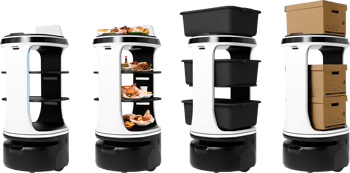Spring is here. For most restaurants, this marks the start of the busy season. The rising temperatures, longer daylight hours, and seasonal holidays bring out the big crowds. And according to most sources, nothing brings out crowds like Mother’s Day.
Leading POS (point of sale) vendor Toast says Mother’s Day is the busiest day of the year for most restaurants. Of course, if you’re a restaurant owner, you don’t need me to tell you that.
But perhaps I can point you toward a few practical solutions that can help with staffing when the crowds do show up. Check out these tech-based solutions for improving your staff’s preparation, productivity, and profitability during high-volume periods.
5 Restaurant Technologies That Can Help With Staffing During Busy Shifts
Let's look at how some of the leading restaurant technology can help your restaurant with staffing during those busy shifts.
1. Optimized Scheduling
Staffing is an ongoing challenge for restaurant owners and operators. For restaurants that struggle with high turnover and staffing shortages, high-volume periods can place a strain on both front-of-house and back-of-house employees.
This is why it’s so important to manage your team effectively. This means communicating clearly, providing flexible scheduling, and staffing both busy and slow shifts with the right number of people
Fortunately, there are several effective restaurant staffing technology solutions that can simplify the otherwise complicated process of scheduling.
For instance, 7Shifts:
- Automates the process of creating schedules that reflect staff availability
- Tracks the performance of team members and shifts
- Provides a platform for internal communication and time-off requests
These features make it easy to keep track of who’s available when and ensure that you have enough people on hand for your busiest shifts, plus see who deals with those shifts most effectively.
2. On-Demand Staffing
On-demand staffing can be a great tech-based solution for restaurants that need extra hands on deck for unusually high-traffic days. It makes it possible to scale the size of your team up and down on short notice, and with no long-term commitment.
For instance, Poached is a mobile app that you can use to find short-term workers on short notice. Poached has more than 1 million registered servers, line cooks, and dishwashers on its call sheet. You can use the Poached mobile app to connect with these industry professionals.
With Poached, you can:
- View resumes
- Schedule interviews
- Onboard applicants who match your needs
Whether you need an extra dishwasher for a busy holiday shift or you need to boost the seasonal size of your server staff to handle outdoor seating in the warm weather, Poached makes it possible to connect quickly and address shifting crowd sizes with agility.
It’s also an excellent way to evaluate prospective long-term employees and provide them with on-the-job training. With Poached, you can make some last-minute additions to your team ahead of the next busy shift or begin recruiting long-term team members for the high-volume periods ahead.
3. Inventory Management
If you’re expecting a few busier-than-usual shifts this spring and summer, it’s obviously essential that you stock up on the ingredients you’ll need for the surge. But it’s just as important to avoid overstocking, which can lead to spoilage, waste, and thinner profit margins. A good inventory management system can help.
For instance, Piecemeal and MarginEdge offer features like:
- Real-time inventory tracking
- Waste monitoring
- Automated reordering
- Supplier integration
Together, these features can make it easier to scale inventory up and down according to expected demand.
A reliable inventory management system also takes some of the load off your staff. It can save hours of valuable time that might otherwise be spent taking physical inventory counts, building orders, and attempting to match these orders to varying crowd sizes. You can also automate ordering for peak periods based on your sales and performance in previous years.
In addition, this type of technology can help you gain better insight into your costs and menu pricing, so you can optimize your menu to serve larger crowds while maximizing profitability.
4. Loyalty Programs
It’s important to maintain high-quality service when your dining room gets crowded. But it’s just as important to capitalize on these big crowds to nurture repeat business.
Implementing a loyalty program is one of the most effective ways to increase guest frequency. And the right vendor can make it easy to start a loyalty program and onboard new visitors without creating an administrative burden for your team.
For instance, with Como, you can:
- Personalize gift cards and coupons depending on customer preferences, profiles, and purchase histories
- Trigger event-based rewards for occasions such as birthdays and anniversaries
- Customize your own loyalty program by selecting the features that best suit your business, such as digital punch cards, friend-referral rewards, points shops, and more
Como’s mobile app is also extremely easy to use for team members and customers alike. On-boarding new loyalty club members is simple and self-explanatory, which means your front-of-house staff can encourage guests to sign up without wasting precious time during a busy shift.
5. Sales Analytics
The data your systems gather is extremely valuable. But are you using it to its full potential?
Advanced restaurant technologies like DYNE can help you gather and understand your data. You can learn a lot from information such as:
- Sales data
- The profitability of certain menu items
- Minimum inventory requirements
- Competitor performance
- Social media campaign performance
You can use these data points to anticipate busy shifts, forecast demand for certain menu items, and optimize both your inventory and staff levels accordingly.
You can also use data to see which menu items offer the best profit margins, how seasonality impacts sales patterns, and which dishes sell best on specific occasions. These insights can put you in the best position to capitalize on bigger crowds, whether you’re preparing for Mother’s Day, Valentine’s Day, or Super Bowl Sunday.
Learn More About the Best Restaurant Tech
The restaurant technologies highlighted here focus on tools that can help your staff better prepare for those busy holidays and seasonal shifts, but tech is constantly evolving. Learn more about the latest tech solutions for restaurants in our free report, “5 Tech Restaurant Trends To Watch in 2025.”





